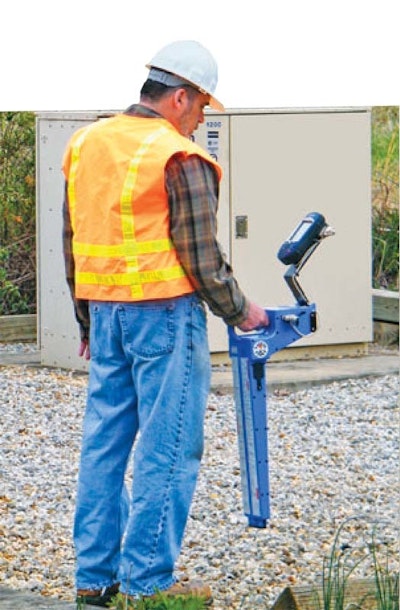
Interested in Location/Detection?
Get Location/Detection articles, news and videos right in your inbox! Sign up now.
Location/Detection + Get AlertsSuccessful utility locating requires good equipment and better technique. When problems arise, fault may often lie with the person or job site conditions, not the equipment.
It’s easy to mistake a job site problem for an equipment malfunction. “Bad depth.” “Doesn’t locate right.” Those are the types of brief, vague descriptions that sometimes accompany McLaughlin locators that get sent in for repair.
When a locator is sent in for repair, the first thing service technicians do is conduct a physical test wherein the equipment is checked at three points; multiple frequencies and different modes are tested. An extremely high percentage of times, however, the testing reveals no issue, so the locator is sent back. The problem in these cases isn’t the locator itself, but rather the user’s understanding of the job site.
The following are McLaughlin’s tips to help ensure the individual using the locator is armed with information to tackle any job site, and better understand when a problem is machine — rather than operator-based.
Effective locating begins with identifying potential issues and using the equipment properly. A locator is only as accurate as its operator, and we’re all human and prone to human error.
Operators should hold locators straight up and down and keep thumbs relaxed (versus a tight grip) to ensure the locator is always hanging down. This allows the locator to move along a consistent, horizontal plane instead of shifting with the contours in the ground. Imagine a string line running along the top of the ground. The goal isn’t to keep the bottom of the locator the same distance from the ground at all times, as the ground will shift height — the goal is to try to follow and keep the locator at the exact same height along the job.
After the operation is on point, the operator needs to ensure they are adjusting to the conditions of the job site accordingly. A tip for operators is to locate the utility line to a known point.
An operator may be tempted to walk 50 feet from the connection point and say with certainty they have their line. “Trusting” versus testing this way can result in a lot of bad locates where an operator thought the utility was along their line, but the signal they were sending out was bleeding over to another utility.
It’s best start a locate in an uncongested area. There is a tendency for people to focus on setting up in a congested environment, like near a telephone pole or utility box. Instead of setting up there, work to locate from an uncongested area and move toward the congested area.
Understanding soil conditions is another important element of a successful locate. Dry soil is less conductive than wet soil and produces a weaker signal on the line being targeted, creating a more challenging locate. That comes into play especially with sandy soils. If it recently rained, sand may work ok, but it drains very quickly so it may be necessary to use a different grounding element. Traffic or utility marking signs can serve as solid grounding elements. A sign can also prove helpful in highly resistant, frozen ground. If it sits below the frost line, it will take the condition from a high resistance to a wet, low resistance, a much better condition for the transmitter.
Develop an understanding of some of these finer points of locating and perhaps you won’t find yourself sending the equipment back to the manufacturer, assuming that it’s the source of your difficulties on a job site.
Combining knowledge of the tool with knowledge of how to locate will drastically increase the efficiency and success of the job.






